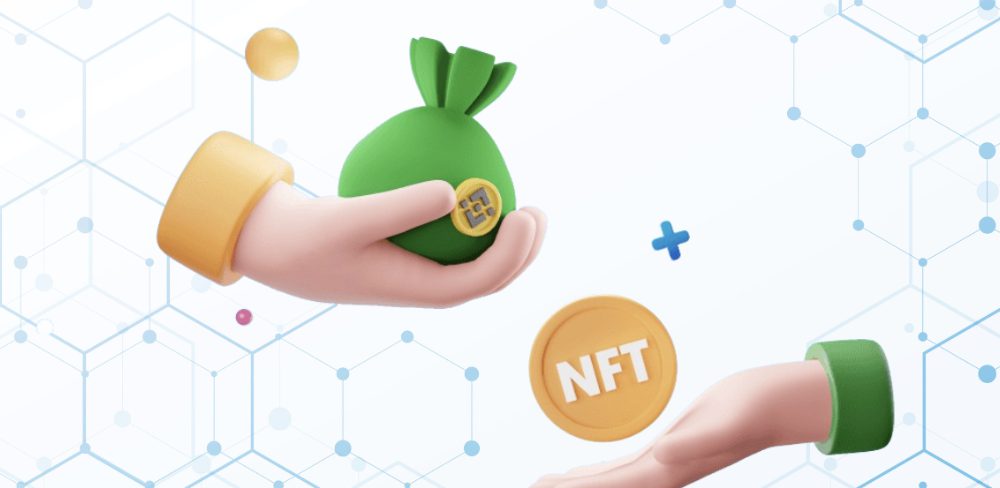What is NFT Lending and How Does it Work?
Your guide: What is NFT Lending and How Does it Work?
Within the fast-changing field of distributed finance (DeFi), nonfungible token (NFT) lending has become a new front ground. The necessity to release their intrinsic worth has grown urgent for investors and asset owners as NFTs—both digital collectibles and representations of real-world assets—have grown ever more popular. NFT lending presents a solution as it lets NFT holders access money without having to sell their valuable digital goods.
So, if you’ve ever wondered, “What is NFT Lending and How Does it Work?” you’re in luck. Today, we’re going to cover this and more. Keep reading to find out more.
Also read: BRICS: Nearly 50 Countries Look to Its Blockchain System Over US Dollar

Understanding NFT Lending
A DeFi tool called NFT lending lets NFT owners use their digital assets as loan security. When the NFT market lacks enough liquidity to enable a direct sale, this creative technique offers investors a means to release the value of their NFTs, which may be very helpful.
Leveraging their NFTs as collateral, owners may get loans in the form of stablecoins or other cryptocurrencies, therefore diversifying their portfolios and gaining extra funds for other uses.
Different forms of NFT lending
The NFT lending ecosystem consists of several different models, each suited to the particular requirements of lenders and borrowers:

Peer-to-Peer NFT Lending
Under this strategy, NFT owners post their digital assets on specialist sites where other users may send loan proposals. Usually including market data and valuation tools, the platform lets lenders and borrowers negotiate loan conditions and assist in ascertaining the true value of the NFT.
Peer-to-Protocol NFT Lending
This approach draws straight from a DeFi protocol or platform. Usually, in the form of a stablecoin, NFT owners enter their digital assets into the smart contracts of the protocol, which subsequently offer the intended loan amount.
Nonfungible Debt Position (NFDP)
Certain systems generate original blockchain-based assets that reflect a nonfungible debt position (NFDP). Like MakerDAO’s collateralized debt position (CDP), which lets consumers collateralize Ether (ETH) for the stablecoin Dai (DAI), these NFDPs act as a transparent record of the loan arrangement and may be sold or transferred.
NFT Lending’s Mechanics
NFT lending usually runs a simple process:
By use of a smart contract or lending platform, the NFT owner locks their digital asset essentially as security for the loan.

Loan Issuance: Usually in the form of a stablecoin or other cryptocurrency, the borrower is provided a loan depending on the value of the NFT and the lending limits of the platform.
To retrieve their NFT, the borrower has to pay back the loan including any relevant interest throughout the loan term. Should the borrower neglect to pay back the loan, the lender could be entitled to the NFT based on the agreed-upon conditions.
Should the value of the NFT collateral drop below a specific level, the platform could start a liquidation procedure, moving the NFT to the lender thereby enabling the recouping of the outstanding debt.
Also read: North Korea to Join BRICS Alliance in 2024?
Benefits
For lenders as well as consumers, NFT financing has several intriguing advantages:
Liquidity Unlocking: Lending lets NFT owners access the value of their digital assets without having to sell them straight-forward, therefore diversifying their portfolios and unlocking liquidity.
Accessibility: NFT financing is open to a wider spectrum of investors, including those with bad or limited credit histories, unlike conventional finance which requires credit checks or thorough documentation.
Fractional Ownership: Employing tokenized fractional NFT purchases, high-value NFTs may be fractionally owned, therefore enabling more investors to engage in the market.
Lenders may create passive income by giving the NFT lending market liquidity and collecting interest on the loans they fund for borrowers.

Risks and Considerations
Although NFT financing has many advantages, it is not without questions and concerns.
The value of NFTs can be somewhat erratic, which makes it difficult to fairly evaluate the collateral and can cause liquidation should the value of the NFT drop below the loan value.
Liquidity Concerns: Should a borrower default on a loan, the lender might have trouble selling the confiscated NFT because of the NFT market’s natural lack of liquidity.
The smart contracts supporting NFT lending systems may be prone to flaws or attacks, therefore maybe losing NFTs or money.
Regulatory uncertainty: The environment in which NFTs and DeFi operate is still developing, hence changes in laws might greatly affect their viability and operations.
Conclusion: What is NFT Lending and How Does it Work?
Emerging as a convincing way to unleash the value of digital assets and provide NFT owners access to liquidity without having to sell their valuable belongings is NFT lending. The NFT lending market is likely to become increasingly significant in the larger bitcoin and blockchain scene as the DeFi ecosystem develops.
Understanding the many models, processes, and factors of NFT lending helps investors and asset owners decide how best to use their digital assets to meet their financial needs.
